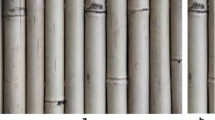Abstract
A local region in an image can be defined using centre pixel and its differences with neighboring pixels. In order to characterize different texture structure in a discriminating manner, this paper proposes twoframeworks of Noise Invariant Structure Pattern (NISP) which utilizes both the centre pixel and local and global information of an image. To replace the centre pixel, a threshold computed from adding centre pixel and intensity averages is used in the LBP code computation. For adding the magnitude information, binary patterns generated by taking thresholds involving centre pixel and local and global average contrast are adopted. Also for adding the information of individual neighborhood of a given pixel, the binary patterns generated from global thresholding of local averages are used. Based on the use of local and global information, this paper suggests two noise invariant models that are CNLP and CNGP (i.e. Completed Noise-invariant Local-structure Pattern and Global–structure Pattern). The proposed NISPs are also insensitive to noise as the centre pixel is not directly used as threshold. The proposed texture descriptors are tested on some of the representative texture databases like Outex, Curet, UIUC, Brodatz and XU –HR. The experimental results have shown that the proposed schemes can achieve higher classification and retrieval rates while being more robust to noise.










Similar content being viewed by others
References
Chang F-C, Huang H-C (2007) A programming model for distributed content-based image retrieval? Proc Int Conf Intelligent Inform Hiding Multimedia Signal Proc 1:210–213
Chen JL, Kundu A (1992) Rotation and gray scale transform invariant texture recognition using hidden Markov model. ICASSP-92 1–5:C69–C72
Cohen FS, Fan ZG, Patel MA (1991) Classification of rotated and scaled textured images using Gaussian Markov random field models. IEEE Trans Pattern Anal Mach Intell 13(2):192–202
Dana KJ, Van Ginneken B, Nayar SK et al (1999) Reflectance and texture of real-world surfaces. ACM Trans Graph 18(1):1–34
Eichmann G, Kasparis T (1988) Topologically invariant texture descriptors. Comput Vis Graphics Image Proc 41(3):267–281
Guo ZH, Zhang L, Zhang D (2010) A completed modeling of local binary pattern operator for texture classification. IEEE Trans Image Process 19(6):1657–1663
Haralick RM, Shanmugam K, Dinstein I (1973) Textural features for image Classification’. IEEE Tran Syst, Man, Cybern 6:610–621
Heikkila M, Pietikainen M, Schmid C (2006) Description of interest regions with center-symmetric local binary patterns. Comput vis Graphics Image Process Proc 4338:58–69
Khellah F (2011) Texture classification using dominant neighborhood structure. IEEE Trans Image Process 19:12
Lazebnik S, Schmid C, Pomce J (2005) A sparse texture representation using local affine regions. IEEE Transcations on Pattern Anal Mach Intell 27(8):1265–1278
Lazebnik S, Schmid C, Ponce J (2005) A sparse texture representation using local affine regions. IEEE Trans Pattern Anal Mach Intell 27(8):1265–1278
Liao S, Law MWK, Chung ACS (2009) Dominant local binary patterns for texture classification. IEEE Trans Image Process 18(5):1107–1118
Liu X-F, Zhu X (2014) Kernel-optimized based fisher classification of hyperspectral imagery. J Inf Hiding Multimed Signal Proc 5(3):431–438
Ojala T, Maenpaa T, Pietikainen M, et al (2002) Outex - new framework for empirical evaluation of texture analysis algorithms, 16th International Conference on PatternRecognition, vol. I, Proceedings, pp 701–706
Ojala T, Pietikainen M, Maenpaa T (2002) Multiresolution gray-scale and rotation invariant texture classification with local binary patterns. IEEE Trans Pattern Anal Mach Intell 24(7):971–987
Porter R, Canagarajah N (1997) Robust rotation invariant texture classification. IEEE Int Conf Acoustics, Speech, Signal Proc I - V:3157–3160
Shrivastava N, Tyagi V (2013) An effective scheme for image texture classification based on binary local structure pattern, Visual Computer, Springer Berlin Verlag, pp 1–10. doi:10.1007/s00371-013-0887-0
Shrivastava N, Tyagi V (2015) An integrated approach for image retrieval using local binary pattern, Multimedia Tools and Applications, Springer, doi:10.1007/s11042-015-2589-2
Tan XY, Triggs B (2010) Enhanced local texture feature sets for face recognition under difficult lighting conditions. IEEE Trans Image Process 19(6):1635–1650
Varma M, Garg R (2007) Locally invariant fractal features for statistical texture classification, in Proc. International Conference on Computer Vision, pp 1-8
Varma M, Zisserman A (2003) Texture classification: are filter banks necessary? International Conference on Computer Vision and Pattern Recognition, pp 691–698
Varma M, Zisserman A (2005) A statistical approach to texture classification from single images. Int J Comput Vis 62(1–2):61–81
Varma M, Zisserman A (2009) A statistical approach to material classification using image patch exemplars. IEEE Trans Pattern Anal Mach Intell 31(11):2032–2047
Xu Y, Ji H, Fermuller C (2005) A projective invariant for texture, in Proc. International Conference on Computer Vision and PatternRecognition, pp 1932–1939
Xu Y, Yang X, Lin H, Ji H (2010) A new texture descriptor using multifractal analysis in multi-orientation wavelet pyramid, International Conference on Computer Vision and Pattern Recognition, pp 161–168
Zhang J, Marszalek M, Lazebnik S, Schmid C (2007) Local features and kernels for classification of texture and object categories: a comprehensive study. Int J Comput Vis 73(2):213–238
Zhang D-L, Qiao J, Li J-B, Qiao L-Y, Chu S-C, Roddick JF (2014) Optimizing matrix mapping with data dependent kernel for image classification. J Inf Hiding Multimed Signal Proc 5(1):72–79
Zhao Y, et al (2012) Completed robust local binary pattern for texture classification, Neurocomputing, doi:10.1016/j.neucom.2012.10.017
Author information
Authors and Affiliations
Corresponding author
Rights and permissions
About this article
Cite this article
Shrivastava, N., Tyagi, V. Noise-invariant structure pattern for image texture classification and retrieval. Multimed Tools Appl 75, 10887–10906 (2016). https://doi.org/10.1007/s11042-015-2811-2
Received:
Revised:
Accepted:
Published:
Issue Date:
DOI: https://doi.org/10.1007/s11042-015-2811-2




